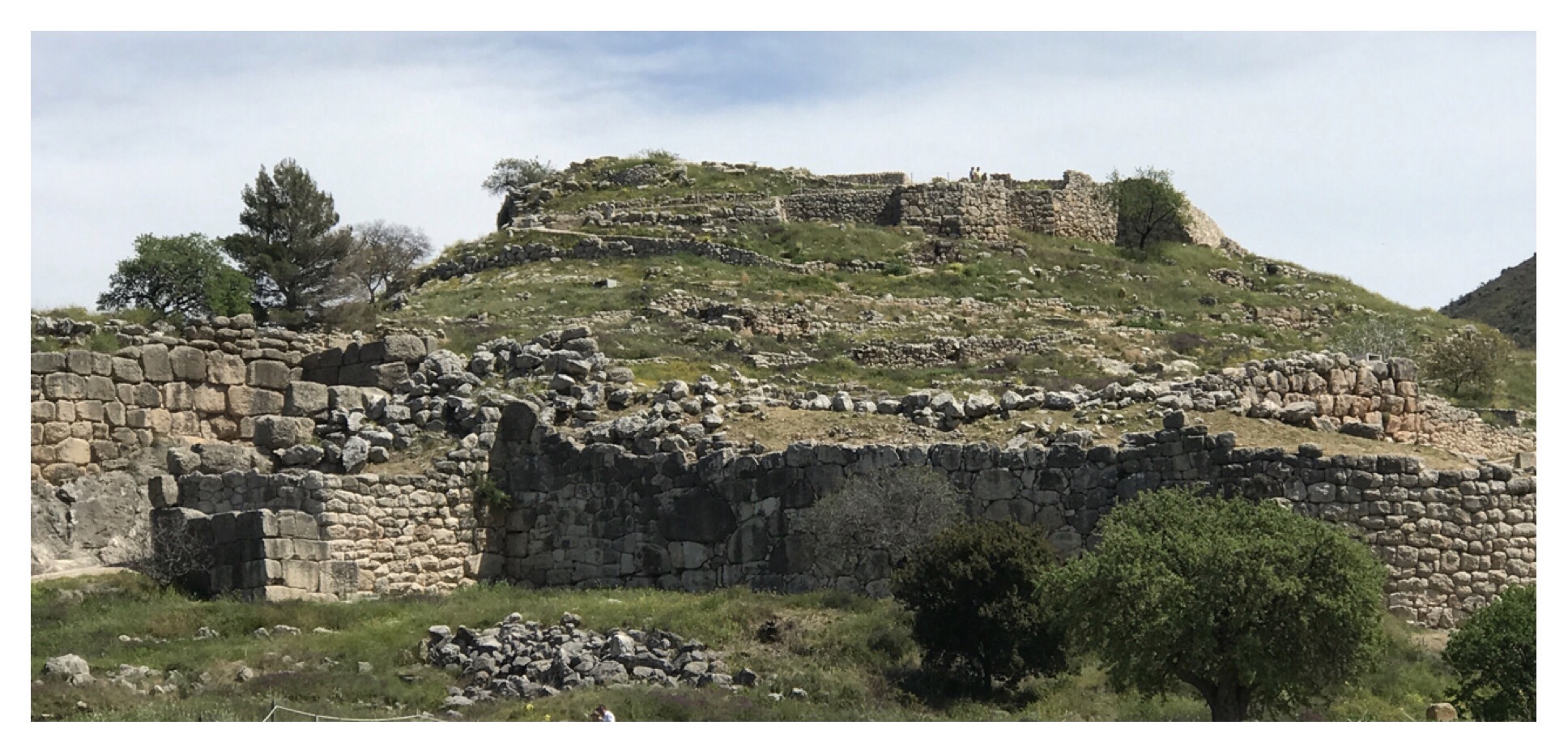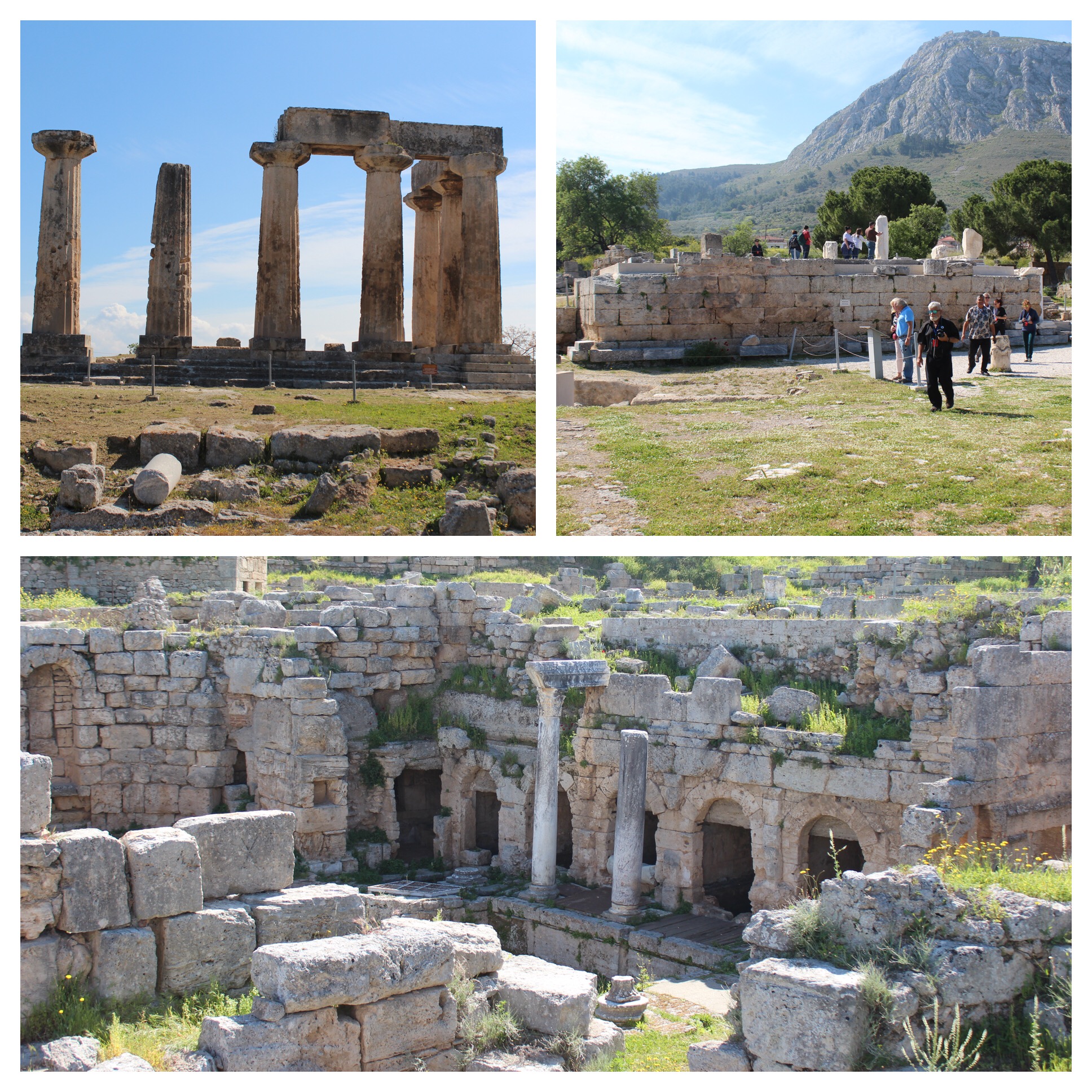

Day 90 of 111. The Treasury of Atreus, Greece
This is one of the best-preserved examples of a “beehive tomb” and dates back from 1300 to 1200 BC. The tomb is reputed to be “Agememnom’s Tomb” but there is no evidence to support that claim. The tomb consists of two rooms: the “beehive” shaped room and a much smaller burial room. Our guide told us that during a burial the larger room is where the family has the farewell dinner for the deceased. The small room is where the body is buried. The tomb is used for a family, so more than one body ends up in the burial room. Generally the entire tomb is buried and appears from the outside as a simple hillock on the landscape.



Day 90 of 111. Mycenae, Greece
Here we are at another Acropolis, this time in Mycenae. This site is especially significant because of the scholar/historian, Schliemann , a German, who studied Ancient Greece and self-funded an archeological exploration that found this ancient city of Mycenae that dates back to 1300 B.C. The most exciting early find was a lot of gold artifacts from the royal burial chambers (the round structure in the ground). There were masks and cups and round coin-like objects used as decorations on clothing. These are on display in the National Archeological Museum in Athens. A mask similar to the mask shown was thought, at first, to be the Mask of Agamemnon, but it was found to be the wrong age by several hundred years.
The oldest figurative symbol of anyone is the triangular carving of two lions over what is called, Lions Gate. The lions have no heads because the heads were probably made of a different material that did not survive. Again, there were quite a few steps to climb, but the views were spectacular. Below these 1300 B.C. ruins, there are prehistoric structures that date back several more thousand years!


Day 90 of 111. Ancient Corinth, Greece
Ancient Corinth is an example of an ancient Roman city built during the Roman occupation of Greece. The Temple of Apollo was a fortunate survivor (many Greek buildings and temples were destroyed by the Romans) because the Romans admired/honored Apollo as one of their own gods. Corinth was one of the places where the Apostle Paul visited in Greece. The Bema is the platform where Paul was judged as to whether his teachings were subversive. He was found innocent, but did leave Corinth. His two letters to the Corinthians are an important part of the New Testament. There were two fountains on this ancient site (which is also an active archeological site). Each has an interesting story. This one, the Peirene Fountain has two mythological stories. One origin of the fountain is by the hoof marks of Pegasus, the flying horse. The other myth involves the accidental death of the son of Peirene by the goddess Diana when she was out hunting. The mother was so distraught that she could not stop crying, so Diana turned her into a fountain.
I found it fascinating to think that these roads were built thousands of years ago. I took a picture of my “modern” feet on this ancient road. The museum on the site had a nice collection of figural art as well as columns to see.

Day 90 of 111. Corinth Canal, Greece
Several rulers of Greece (including the Roman emperor Nero) dreamed of digging a canal through the Corinth Isthmus (red pin on map). When completed it would save ships 431 miles from having to sail around the Peloponnese peninsula to get to Greece’s western port cities. It would also generate a sizable amount of income for the city of Corinth. Construction was formally inaugurated on April 23, 1882, and was completed on July 25, 1893. Today it generates about five million dollars in income.



Day 89 of 111. National Archeological Museum, Athens, Greece
This museum has examples of pottery, artifacts, and art from all over Greece. We were especially taken by the pottery shard showing donkeys pulling a rope and the statue of the Minotaur. The gold Mask of Agamemnon (not really him, since the gold was dated before he was born) was one of many pieces of gold found in various tombs.
Our guide was very good at explaining the evolution of the figures. The earliest figures (bottom left) were very stylized with lines representing muscles such as on the abdomen and thighs. The figure on the right has a more natural depiction of abdominal muscles, etc. Eventually, the figures became very natural, but idealized such as the figure in the center. The bronze statue is called the Poseidon of Artemision. This statue was very interesting because it was found in a ship wreck. There is still some uncertainty whether it is Poseidon or Zeus. Whatever the statue was throwing would clearly determine its identity. Poseidon would have a trident and Zeus would be throwing a thunderbolt. The other interesting idea is that the body is idealized and therefore athletic and young. The beard and mustache show that this is supposed to be an older male.
The boy on the horse is an even later development of the human figure where anguish and emotion are shown rather than placid ideal figures.